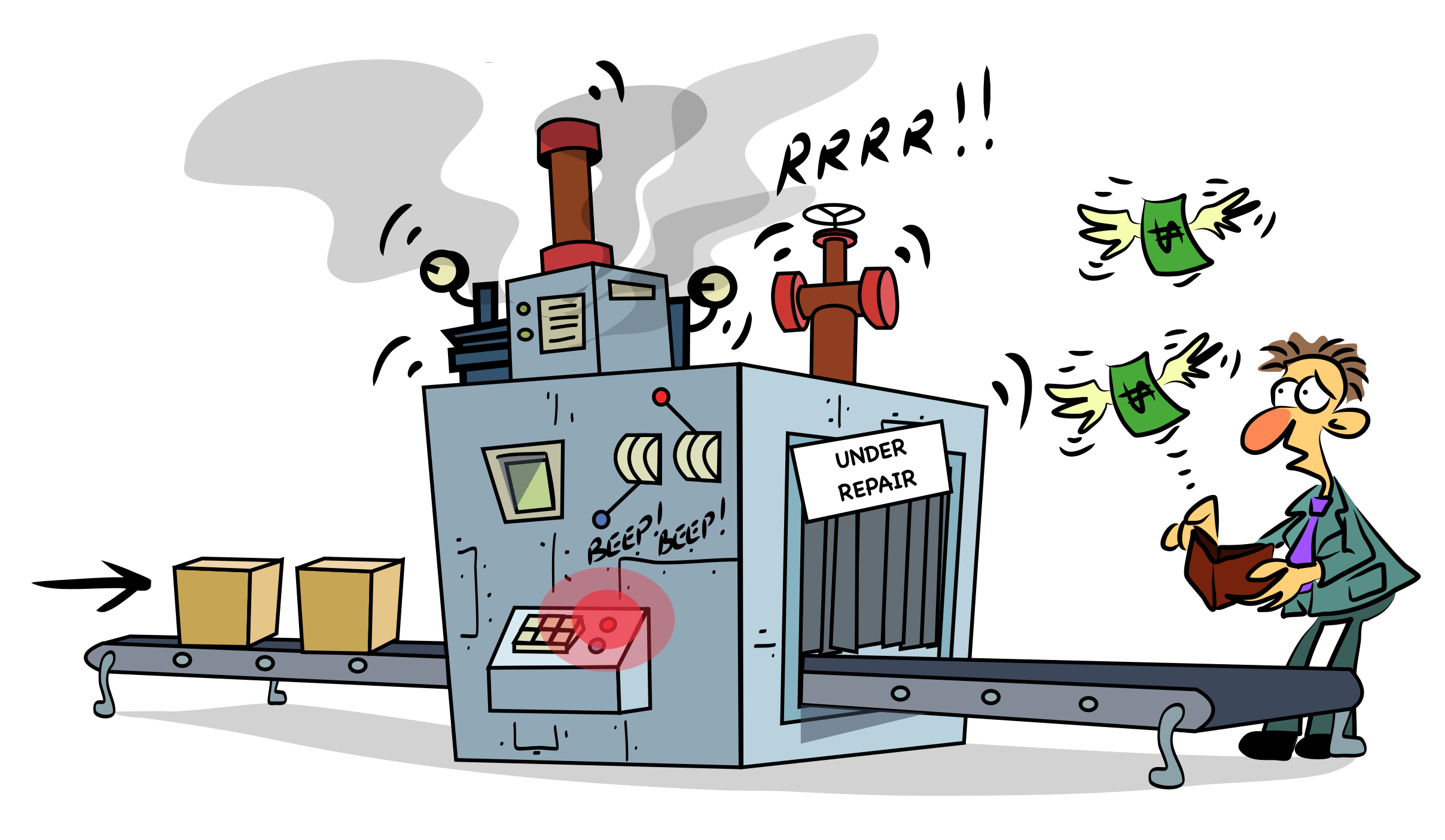Imagine this:
Your operation runs for long hours, it has always been running smoothly and you have nothing to worry about. Everything is going great... until one day, your operation ceases due to the breakdown of your machine. You are losing x amount of dollars by the minute and you never predicted that this would happen… and it did.
A breakdown in an industrial equipment can be costly; we are talking about production loss, various direct and indirect cost and hefty maintenance fees... As a result, it can generate an overall loss in your business operation. Therefore, establishing and following a careful maintenance program is essential for this process.
Now, let's take a look at:
Reactive maintenance
Also known as "breakdown maintenance", reactive maintenance is a process whereby the focus is on repairing or replacing equipment and restore to it's normal condition only after it is already broken or deemed faulty. In other words, reactive maintenance simply deals with a problem or issue only when it has occurred and does not take any preventative measures.
Why isn't it a good idea?
There are several reasons why reactive maintenance is not always recommended unless necessary where implementing a preventative or predictive method of maintenance is not possible:
1. Cost and Unpredictability
Do you know that emergency repairs can cost 3 to 9 times more than planned repairs? That sounds really expensive because it is. Equipment fails with little or no warning, so the process could be down until replacement parts arrive, resulting in lost revenue. Breakdown maintenance is extremely costly because shutdown happen when production is still running and unexpected failures lead to higher maintenance costs such as increased overtime labor costs, as well as expedited delivery of replacement parts.
2. Shorter lifespan
Reactive maintenance does not keep the systems running in optimal “as new” condition. Over time, systems that have been maintained deteriorate faster and results in a shorter life expectancy.
3. Safety Hazard
When maintenance work is scheduled, technicians have time to review the standard procedures and safety requirements to complete the job correctly. However when maintenance work is reactive, technicians tend to take more risks as they are under pressure to get systems running without delay.
That being said, reactive maintenance can still be performed, but it is strongly recommended that it should only be carried out on components that are inexpensive, easy to replace, where the failure does not cause collateral damage in the system or where the cost of reactive maintenance is not greater than preventative maintenance.
In our next blog post, we will be looking at different maintenance programs that can help you determine the best method for your operation and how to save cost.
Book a Consultation with Us
Not sure if your maintenance program is the perfect fit for your operation? You could book a consultation with our experienced engineers who could provide a customized program just for you.







